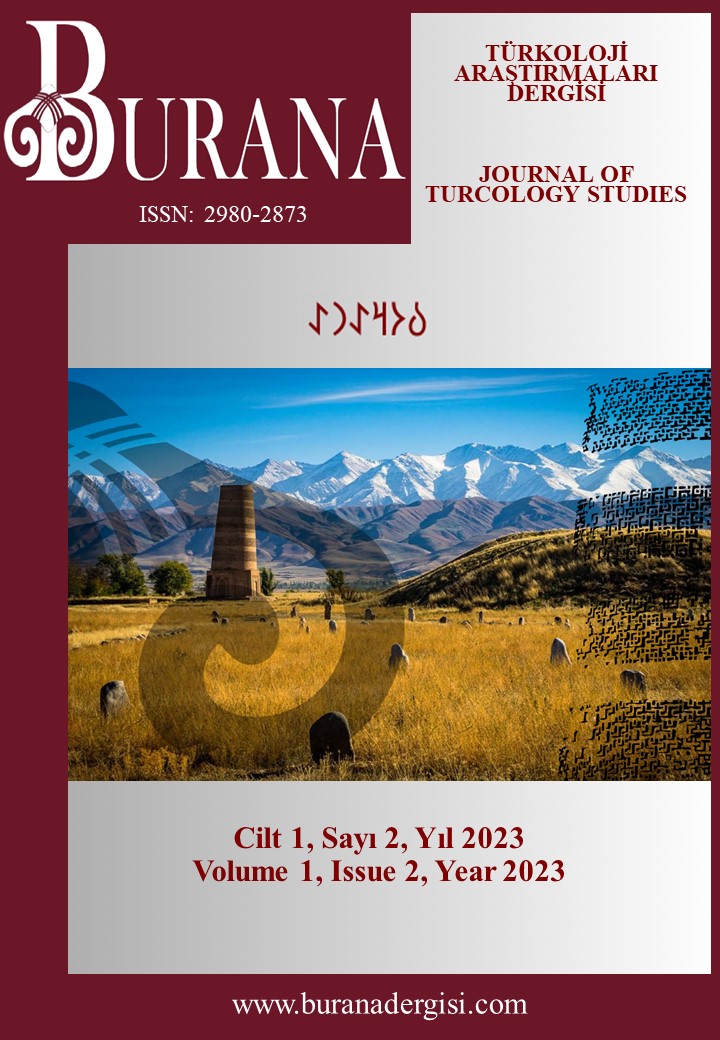A General Overview of the Toponyms of Komijan County, Iran
DOI:
https://doi.org/10.5281/zenodo.10429162Keywords:
Iran, Markazi Province, Komijan County, Naming Motivation, MicrotoponymAbstract
Toponyms, as one of the most crucial intangible cultural heritage, contain a piece of remarkable information related to the language, history, and geography of any region. In this research, the microtoponyms of Komijan County, located in Markazi province of Iran, have been investigated through collecting and analyzing 2678 microtoponyms from 57 residential areas (2 cities and 55 villages) of this county. Given the fact that the Turkish language in Komijan County is in danger, many microtoponyms of this region are also in danger of gradually disappearing, which explains the necessity of conducting the present research. Based on the results, there is a significant relationship between the frequency of microtoponyms and the geographical location of each village, i.e., mountainous villages often have more microtoponyms. The observed difference between the local and official pronunciation of the studied oykonyms can sometimes display the distortion of the native name at the stage of the official naming. The topoformants used in the structure of the oykonyms indicate a significant diversity, which at least provides the possibility of classifying them into 4 different groups, including oykonyms without topoformant, oykonyms with Abad or Ava topoformants, oykonyms with hydrotopoformants, and oykonyms with other kinds of topoformants. From a lexical and structural point of view, most of the microtoponyms belong to Azerbaijani Turkish language. In terms of nature, oronyms are the most frequent with more than 1300 cases, followed by hydronyms and dromonyms. Semantically, descriptive names, anthropotoponyms, phytotoponyms, and zootoponyms have the highest frequency, respectively. It should be noted that the linguistic affiliation of more than 100 toponyms is currently uncertain which requires independent studies. Because it may raise the possibility of the existence of an unknown language layer in the region and adjacent areas.
References
Alasli, M. (2019, July 15-20). Toponyms’ contribution to identity: The case study of Rabat (Morocco). 29th International Cartographic Conference, Tokyo, Japan. DOI: 10.5194/ica-proc-2-3-2019
Əliyeva, R. (Red.) (2007). Azərbaycan toponimlərinin ensiklopedik lüğəti 1. Şərq-Qərb.
Ghasemkhani, T. (2012). Barresi-ye farayand-e tekrar dar guyesh-e Torki-ye Fazlabad. [Master’s thesis, University of Islamic Azad]. https://srb.iau.ir/library/fa/page/6172/%D9%BE%D8%A7%DB%8C%D8%A7%D9%86-%D9%86%D8%A7%D9%85%D9%87-%D9%87%D8%A7
Gün, F. ve Kasımhani, İ. (2023). İran’da eski Türk kültlerinin izleri: Komican bölgesi kaya kültü örnekleri. Tarih Okulu Dergisi, (62), 97-124. DOI: 10.29228/Joh.65899
Komijani Bozcheloei, Z. A, Ghiasian, M. S. ve Taheri Ardali, M. (2022). Parakandegi-ye zabani dar ostan-e Markazi. Nashriye-ye elmi-ye zaban-e Farsi va guyeshha-ye Irani, (13), 201-216. DOI: 10.22124/PLID.2023.22965.1615
Makhmudovna Ismatova, N. (2021). Principles of toponyms classifications. Academic Research in Educational Sciences, (3), 1025-1029. DOI: 10.24411/2181-1385-2021-00503
Mezkit Saban, G. (2020). Türk kültüründe ilahi varlık kurt ana ve kurt ata’nın anadolu geleneklerindeki doğum pratiklerine etkisi üzerine bazı tespitler. Kesit Akademi Dergisi, (6), 232-240. DOI: 10.29228/kesit.44539
Narzilloyeva, M. (2023). Lexical features of microtoponyms of Zhondor. International Journal of Innovative Analyses and Emerging Technology, (3), 11-14.
Refahi Alamdari, F. (2014). Mabani-ye toponymy va negahi be toponymha-ye Iran. Firuz Refahi.
Shirzadeh, Gh., Sharahi, E. va Kaka, Gh. (2013). Gozaresh-e moghaddamati-ye barresi va shenasayi-ye bastanshenakhti-ye shahrestan-e Komijan, ostan-e Markazi. Majalle-ye Payam-e Bastanshenas, (19), 51-72.
Şahin, İ. (2011). Yeradıbilimi araştırmalarında mikrotoponiminin yeri, önemi ve araştırma yöntemi: Tırnak köyü (İçel/Gülnar) örneği. Turkish Studies, (6), 1748-1770. DOI: http://dx.doi.org/10.7827/TurkishStudies.2076
Tameh, M. (2020). Vajeha-ye marbut be tabiat va padideha-ye tabii dar kodenamha-ye İrani va karbord va pishine-ye an. Majalle-ye Motaleat-e İrani, (40), 233-266. DOI: 10.22103/jis.2021.16544.2071
Torayeva, S., Kargar, M. and Nuri, H. (2023). The concept of micro toponyms. Study of micro toponyms. Journal of Pedagogical Inventions and Practices, (18), 8-10.
URL-1: Dargah-e Melli-ye Amar. Retrieved on 14 November 2023 from https://www.amar.org.ir/
Zeyghami, H. (2017). Ravayat-e amiyaneh darbare-ye vajhetasmiye-ye jaynamha-ye shahrestan-e Komijan [Master’s thesis, University of Tehran]. https://ganj.irandoc.ac.ir/#/articles/7c4115745a77ce7f8a4b6278140eb527
Downloads
Published
How to Cite
Issue
Section
License
Copyright (c) 2023 BURANA - Journal of Turcology Studies

This work is licensed under a Creative Commons Attribution 4.0 International License.


